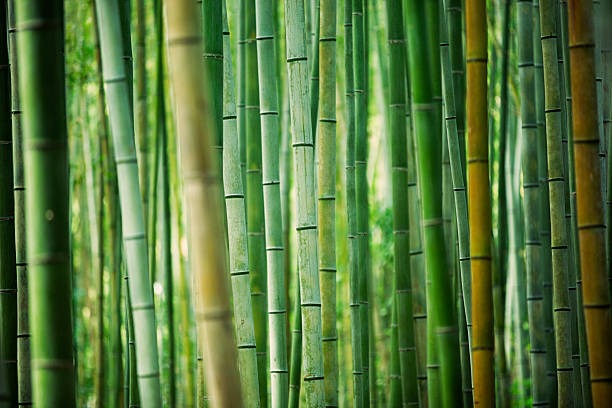Just a heads up, some of the links on this blog are affiliate links. This means if you click and make a purchase, I may earn a small commission—at no extra cost to you! Think of it as a tiny thank-you tip for my endless search for the best health, wellness, and sustainable living products. Rest assured, I only recommend things I truly love or wish I could hug in real life.
5 Reasons Why Bamboo is Better than Wood
Janelle Salo RN
7/19/20248 min read
I love my bamboo sheets, so I recently tried bamboo toilet paper by Caboo. Even though it’s a tiny bit more expensive at $34.19 for 24 double rolls than conventional toilet paper, I made the switch! It feels and acts exactly the same as traditional toilet paper. Still, I mostly loved using something so sustainable that it could regenerate itself in a few weeks without replanting it. Bamboo is often stronger and more flexible than traditional wood, making it a versatile choice for various applications. In this article, we will cover why Bamboo is the better, more sustainable choice over wood products like paper, building materials, and even the sheets you sleep on!
Bamboo vs. Wood
Understanding Bamboo and Wood as Building Materials
Bamboo is a type of fast-growing grass native to tropical and subtropical regions. It is known for its tall, woody stems. Bamboo's properties include a high strength-to-weight ratio, flexibility, and resistance to most pests, making it a durable and eco-friendly material.
Wood is a hard, fibrous material obtained from tree trunks and branches. It is widely used for its versatility and natural beauty. Wood's properties include good thermal insulation, workability, and varying degrees of strength and hardness depending on the type.
Due to its strength and sustainability, bamboo is commonly used in construction for scaffolding, flooring, and structural elements and in furniture and decorative items design. Wood is extensively used in construction for framing, flooring, and cabinetry, as well as in furniture, paneling, and various aesthetic applications.
Environmental Benefits
Eco-Friendly Benefits of Bamboo
Bamboo has an exceptionally rapid growth rate, with some species growing up to 3 feet in a single day, allowing for frequent harvesting without depleting resources. This rapid regeneration makes bamboo a highly sustainable alternative to traditional timber, which takes decades to mature.
Bamboo is highly efficient at absorbing carbon dioxide, isolating up to 35% more CO2 than an equivalent stand of trees. (1) This makes bamboo cultivation a powerful tool in combating climate change by reducing greenhouse gas concentrations in the atmosphere.
Bamboo's extensive root system helps bind the soil, preventing erosion and promoting soil stability. This network of roots can also enhance soil fertility and support water retention, making bamboo an excellent choice for soil conservation efforts.
Environmental Impact of Wood
Deforestation leads to the loss of biodiversity and disruption of ecosystems. It contributes to climate change by reducing the number of trees that can absorb carbon dioxide. (2) Additionally, it causes soil erosion, negatively impacts water cycles, and displaces indigenous communities and wildlife.
The carbon footprint of wood production includes emissions from logging, transportation, and processing, contributing to greenhouse gas emissions and deforestation. Sustainable forestry practices and responsible sourcing can help alleviate these environmental impacts.
Bamboo has a lower ecological impact than wood due to its rapid growth, minimal need for pesticides and fertilizers, and superior carbon isolating abilities. In contrast, traditional wood production often involves deforestation, longer growth cycles, and a higher carbon footprint, making bamboo a more environmentally friendly option.


Strength and Durability
Bamboo's Strength and Durability
Bamboo has a higher tensile strength than many wood types, making it a solid and flexible building material. This superior tensile strength allows bamboo to withstand greater stress and strain without breaking, making it ideal for construction and structural applications.
Bamboo is naturally resistant to most pests (3) and most moisture, reducing the need for chemical treatments and increasing its durability in various environments. (4) This resistance helps prevent rot and decay, making bamboo a reliable material for indoor and outdoor use.
When properly treated and maintained, bamboo structures can last for decades, offering durability comparable to traditional wood structures. Bamboo's natural strength and resilience contribute to its longevity, making it a sustainable choice for long-term construction projects.
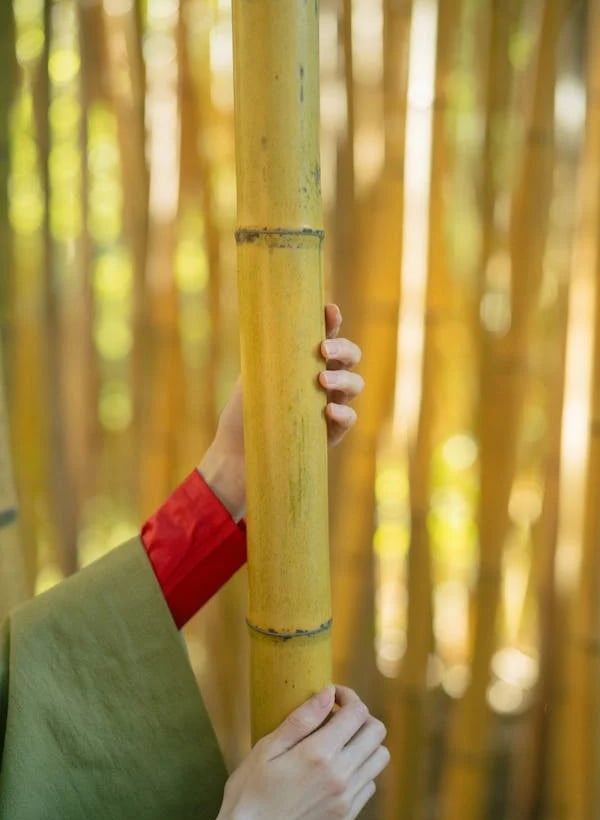

Wood's Strength and Durability
Hardwoods like oak, maple, and teak are known for their exceptional strength and durability, making them ideal for furniture and structural applications. Softwoods such as pine, cedar, and fir are generally lighter and easier to work with, but they are less strong and durable than hardwoods.
Wood is susceptible to damage from pests like termites and carpenter ants, as well as moisture, which can lead to rot and decay. Untreated wood is particularly vulnerable, requiring protective treatments and coatings to enhance its resistance to these threats.
Wood requires regular maintenance, including sealing, staining, and painting, to protect it from environmental damage and extend its lifespan. Additionally, periodic inspections and treatments are necessary to prevent and address pest infestations and moisture damage.
Versatility and Applications
Versatility of Bamboo
Bamboo is widely used in construction for flooring due to its durability and eco-friendly properties and for scaffolding in many countries due to its strength and flexibility. Additionally, bamboo is a popular material for furniture and decorative items, offering a sustainable and stylish alternative to traditional wood products.
Bamboo's natural look, unique grain, and warm tones add a distinctive aesthetic appeal to interior and exterior designs. Its flexibility allows it to be crafted into various shapes and forms, making it versatile for creative and innovative design applications.
Recent innovations in bamboo products include engineered bamboo, which enhances its structural capabilities for modern construction. Technological advances have also led to the development of bamboo composites and textiles, expanding their applications in various industries, from automotive to fashion to the bed sheets we sleep on. The Cosy House Luxury bamboo bed sheets are just $57.95 on Amazon and are a much softer, more durable fabric than regular cotton sheets.
Due to its rapid growth and sustainability, bamboo is increasingly used for paper products, including toilet paper. It offers an eco-friendly alternative to traditional wood-based materials. Bamboo's natural fibers create strong, soft paper and bedding products that are both biodegradable and gentle on the environment.


Versatility of Wood
Traditionally, wood has been used in construction for framing, flooring, and roofing, as well as in design for crafting furniture, cabinetry, and decorative elements. Its versatility and availability have made it a fundamental material in building homes, barns, and other structures throughout history.
Wood holds significant aesthetic and cultural value in architecture, symbolizing warmth, natural beauty, and craftsmanship. Many cultures have utilized wood in their architectural heritage, creating iconic structures and intricate designs that reflect regional traditions and identities.
Innovations in wood products include the development of engineered wood, such as cross-laminated timber (CLT) and laminated veneer lumber (LVL), which offer enhanced strength and stability for modern construction. Advances in technology have also led to improved wood treatments and sustainable forestry practices, increasing the material's durability and environmental friendliness.


Cost and Accessibility of Wood
The initial cost of using wood can vary significantly, with softwoods being more affordable upfront than hardwoods. Long-term costs can be higher due to the need for regular maintenance, treatments, and potential repairs to prevent issues like rot and pest damage.
The price of wood is influenced by its type, with hardwoods like oak and mahogany being more expensive than softwoods like pine and fir. Quality also plays a role, as higher-grade lumber with fewer knots and imperfections commands higher prices. The source, including the distance from the supply location and sustainable harvesting practices, can also impact cost.
The availability of different wood types depends on regional growth conditions, with some species being abundant in certain areas while scarce in others. Local regulations, forestry management practices, and market demand also affect the accessibility of various wood types, influencing their presence in the marketplace.
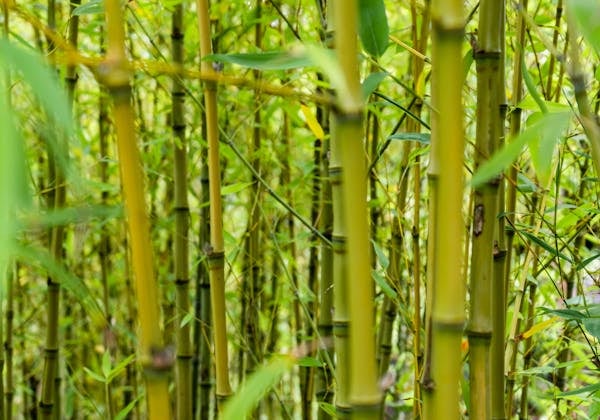

Bottom Line
Bamboo offers a sustainable and eco-friendly alternative to traditional wood. Its advantages, like rapid growth, high tensile strength, and natural resistance to pests and moisture, make it better for the planet. While wood remains a classic choice with proven durability and aesthetic appeal, bamboo's innovative properties and lower environmental impact make it a compelling option for modern construction and design. The choice is yours!
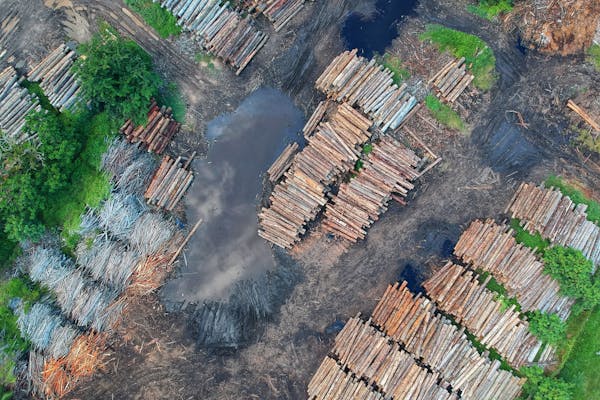

FAQs
Is bamboo stronger than wood? Bamboo has a higher tensile strength than many types of wood, making it exceptionally strong and flexible. Its strength-to-weight ratio often surpasses traditional wood, especially in applications requiring resilience and flexibility.
How sustainable is bamboo compared to wood? Bamboo is generally considered more sustainable than wood because it grows rapidly and can be harvested every few years without replanting, whereas trees take decades to mature. Bamboo's ability to sequester carbon and its minimal need for pesticides and fertilizers enhance its environmental benefits.
What are the disadvantages of using bamboo? Disadvantages of using bamboo include its susceptibility to certain pests if not properly treated and its variability in quality depending on the source and processing methods. Additionally, changes in humidity and temperature can affect bamboo's performance, which may require careful consideration in certain applications.
Can bamboo replace wood in construction? Bamboo can replace wood in many construction applications, especially where sustainability and strength are priorities. However, its suitability depends on the project's specific requirements, including load-bearing needs and environmental conditions, and it may only partially replace wood in some situations.
What are the cost differences between bamboo and wood? The initial cost of bamboo can be higher than that of some types of wood due to processing and import expenses, but it can be comparable to or less than that of high-quality hardwoods. Wood prices vary widely based on type, quality, and source, making cost comparisons dependent on specific materials and market conditions.
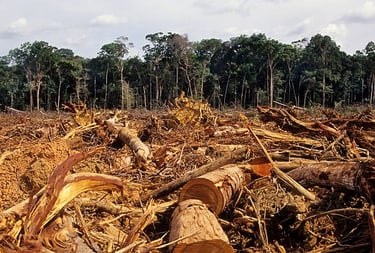
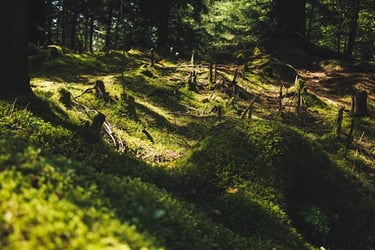


Cost and Accessibility
Cost-Effectiveness of Bamboo
Due to its growing demand and processing requirements, bamboo's initial cost can be higher than some types of wood, but it is often comparable to or less expensive than high-quality hardwoods. Wood prices vary widely depending on the type, with softwoods generally being more affordable than hardwoods.
Bamboo offers long-term savings due to its durability and low maintenance requirements. It is naturally resistant to most pests and moisture. Wood, requiring frequent maintenance such as sealing and treatment, can also provide long-term value, mainly when using high-quality, treated lumber.
Bamboo is readily available in regions where it is cultivated: (5)
Asia
South America
Australia
Africa
Southern United States
It is particularly accessible in Asia, making it a resource in those areas. However, its availability may be limited in regions that rely on imports, potentially affecting cost and accessibility compared to locally sourced wood.
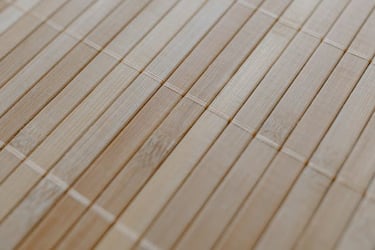
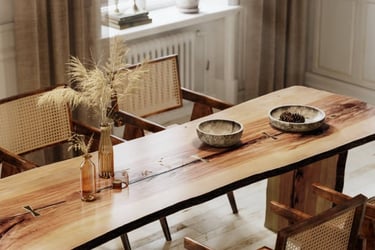



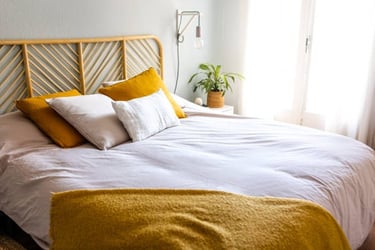






© 2025 Salo Content Writing LLC, all rights reserved
Join the Movement for a Healthier Planet! 🌿
Subscribe now and get your FREE Sustainable Living Checklist! Plus, enjoy weekly articles and delicious plant-based recipes straight to your inbox. Let’s make sustainable living simple and inspiring, one email at a time! 💚✨

